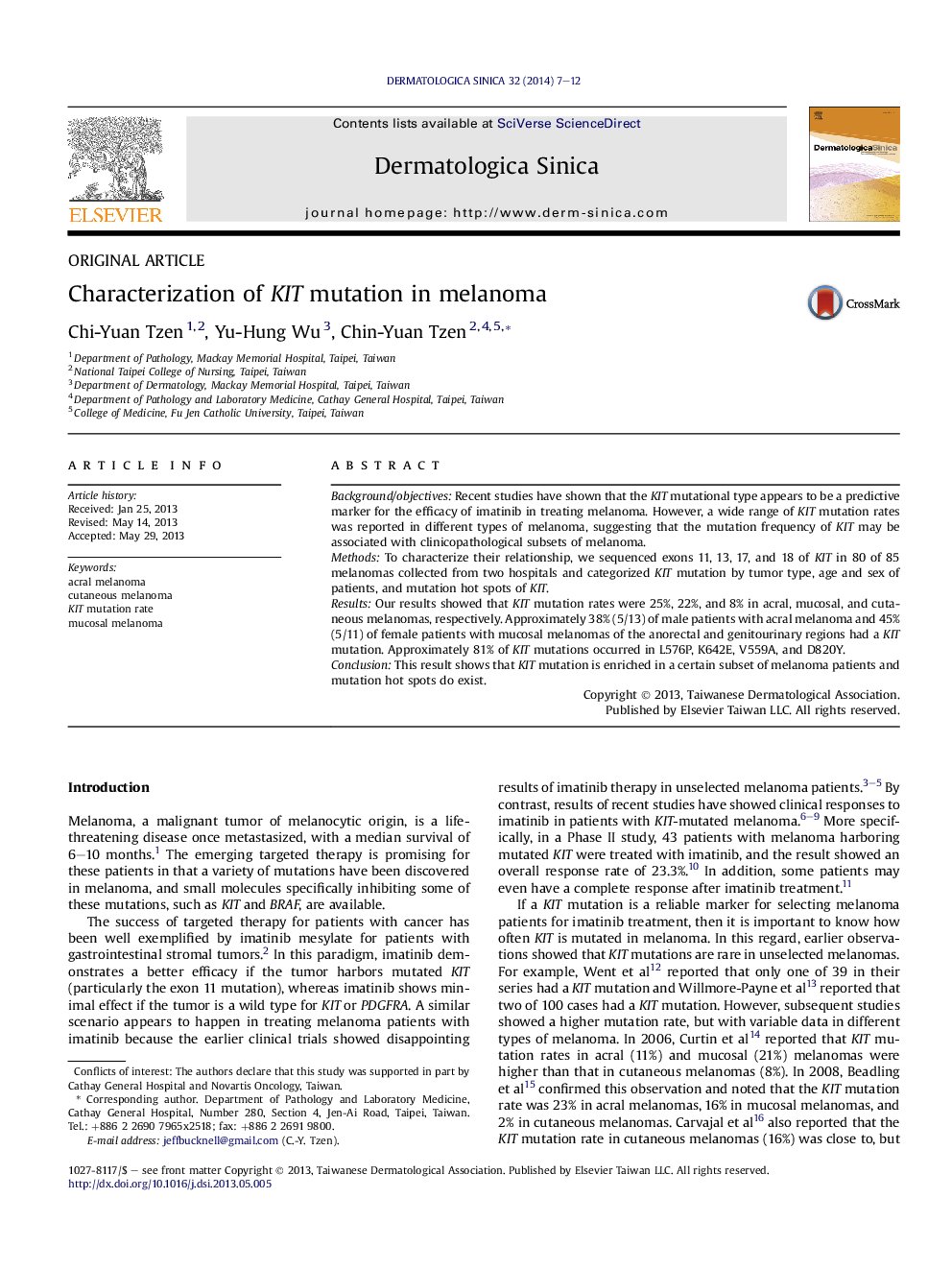| Article ID | Journal | Published Year | Pages | File Type |
|---|---|---|---|---|
| 3196393 | Dermatologica Sinica | 2014 | 6 Pages |
Background/objectivesRecent studies have shown that the KIT mutational type appears to be a predictive marker for the efficacy of imatinib in treating melanoma. However, a wide range of KIT mutation rates was reported in different types of melanoma, suggesting that the mutation frequency of KIT may be associated with clinicopathological subsets of melanoma.MethodsTo characterize their relationship, we sequenced exons 11, 13, 17, and 18 of KIT in 80 of 85 melanomas collected from two hospitals and categorized KIT mutation by tumor type, age and sex of patients, and mutation hot spots of KIT.ResultsOur results showed that KIT mutation rates were 25%, 22%, and 8% in acral, mucosal, and cutaneous melanomas, respectively. Approximately 38% (5/13) of male patients with acral melanoma and 45% (5/11) of female patients with mucosal melanomas of the anorectal and genitourinary regions had a KIT mutation. Approximately 81% of KIT mutations occurred in L576P, K642E, V559A, and D820Y.ConclusionThis result shows that KIT mutation is enriched in a certain subset of melanoma patients and mutation hot spots do exist.
